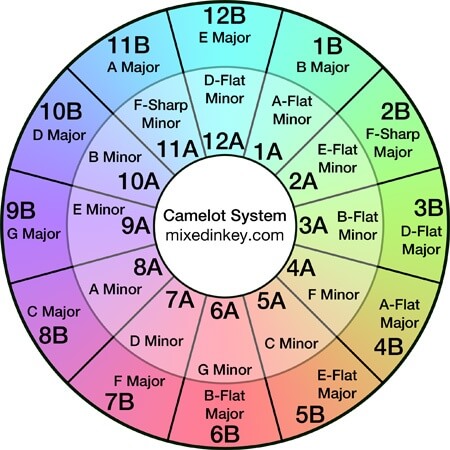Stem DJing – The Ultimate Mixing Tool
DJ technology has evolved rapidly over the years, but few innovations have been as groundbreaking as Stem DJing. This revolutionary approach is reshaping the art of mixing, offering DJs unprecedented control and creativity.
In this post, we’ll break down what Stem DJing is, explore its incredible potential, and discuss how you can harness it to elevate your performances.
What is Stem DJing?
Unlike traditional DJing, which works with full stereo tracks, Stem DJing enables unprecedented control and creativity during a performance.
It’s a cutting-edge approach that allows DJs to isolate and manipulate individual elements—or “stems”—of a track, in real-time. Typically stem DJing allows you to isolate – vocals, bass, drums, and melodies.
This game-changing feature was first introduced by Native Instruments in 2015 with their Traktor Pro software, which unveiled the innovative “Stem Decks” format. This breakthrough allowed DJs to work with tracks divided into four separate stems, providing previously unthought-of flexibility and creative possibilities.
Since then, Serato, Virtual DJ, and Rekordbox have all integrated stem separation technology into their pro software, making it more accessible to a wider range of DJs. The widespread adoption of stems has transformed the way DJs approach their craft. Used well, Stems now have the potential to elevate a humble DJ into a real-life audio wizard.

Stem Djing – The Future of Mixing
DJing, especially when it comes to mixing and blending, has always centred around the compatibility of two tracks. Traditionally, DJs have mastered techniques like EQing, filtering, and applying effects such as delay and reverb to create smooth transitions. But with the introduction of stem separation, DJs now have an unparalleled level of control. This technology allows them to mix tracks by isolating and introducing individual elements one at a time. For instance, you could remove the bassline from one track and seamlessly bring in the bass stem of the next. Or, you might isolate the vocals from one song and layer them over the instrumental of another. This level of control is a true game-changer, offering what many consider the holy grail of DJing.
Mixing in Key using Stems
Stems are an incredibly powerful tool, but combining them with key mixing can elevate your DJing to new heights. DJ software displays a track’s key, making it a helpful guide for harmonic mixing. If your music file doesn’t already include key information in its metadata, most DJing software can analyze the track and determine the key for you. Some software even allows you to adjust a song’s key up or down, making it easier to match keys for seamless transitions.
To simplify key matching further, software like Serato DJ and Rekordbox support the Camelot Wheel system. Developed by Mixed In Key, the Camelot Wheel is a widely-used tool for harmonic mixing, prized for its intuitive, color-coded circular layout. For more details on the Camelot Wheel check out this post.

5 Ways Stem to Integrate Stem Mixing a Set.
Now, let’s dive into some amazing ways you, as a DJ, can unleash your creativity and take your performances to the next level using stems.
- Live Mash-ups: Mash-ups have become a firm fixture on the dancefloors but with stem mixing, you have the means to create your own ‘on the fly’ mash-ups in real-time. Stems make it easy to remove a vocal from the backing track and isolate the acapella of a track to mix over the top. Just remember, matching the keys is crucial—especially for sung vocals—to ensure your mash-up sounds harmonious.
- Big Hook Switcheroo: Add excitement to your set by playing with expectations. Right before a song’s chorus, stem strip everything away except the vocal. For maximum effect, isolate the vocal one or two bars before the drop. Then, with keys perfectly matched, Drop the new track over the chorus. Just make sure the track coming in doesn’t have any competing vocals. This dramatic switch can create a powerful moment on the dancefloor.
- Chorus Strip-downs: Make a chorus hit harder by stripping it back. Remove the bass, melody, or both to give the familiar section a fresh twist. If the crowd is familiar with the song, surprising them with a stripped-down version of the chorus can make for a memorable, high-impact curveball.
- Genre Blending: Stem separation makes switching between genres easy. By removing competing elements you can for instance combine old reggae tracks with DnB, an 80’s pop vocal over a Boom-Bap beat or How about an Indie Rock EDM hybrid. By creating unexpected musical combos such as these you will be keeping your crowd entertained and on their toes.
- Original Sample Mix: Blend original samples with the tracks that use them for a creative twist. Start by ensuring the original sample and the current track are in the same key and tempo. Then, remove the bass and melody stems from the playing track to make room for the sample. If the sample has vocals, strip out its vocal stem to avoid clashing. Just be cautious when mixing live samples, as they will probably have pitch variation. This technique is therefore not for the faint-hearted as it will require a lot of real-time subtle pitch riding.

Dissadvantages of Stem Mixing
Stem DJing is undeniably a game-changer for creative mix DJs, offering unparalleled flexibility and control. However, it does come with a few drawbacks to keep in mind.
One major challenge is the presence of artefacts when extracting stems. While some tracks handle stem separation better than others, it’s hard to predict how clean the separation will be, especially when mixing on the fly. That said, in my experience performing in various clubs, these artefacts are rarely noticeable in loud, noisy environments where subtle imperfections tend to get lost in the mix.
Another potential downside is the risk of overusing stems. With great power comes great responsibility, and like a skilled chef, DJs must strive for balance in their sets. Over-reliance on stem separation can become overpowering or even annoying to listeners. Use it thoughtfully as part of a well-rounded performance.
Finally, it’s worth noting that stem DJing demands significantly more processing power. While standard DJ software is generally light on your laptop, the additional workload of isolating stems can impact performance, leading to higher latency, stability issues, or even crashes. To avoid technical problems, always check your laptop’s compatibility with the software’s minimum requirements before incorporating stems into your sets. It is also advisable to close any other programs that are open or running in the background.
Summary
Stem mixing is arguably the most revolutionary advancement in DJing since the dawn of digital mixing. It offers a level of real-time control over music that once seemed unimaginable. The creative possibilities are almost endless, especially when combined with modern DJ software’s triggering, looping, and FX capabilities. So, if you’re a DJ with a laptop capable of handling stems, the future is truly in your hands. Start separating, experimenting, and elevating your mixes to new heights!
Remember – RouteNote Create subscriptions start from as little as $2.99. You also get 10 FREE credits to spend on samples along with access to our FREE sample pack bundle when you sign-up!
